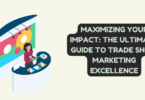
Introduction
The software development space evolves continuously under the influence of emerging technologies, new societal demands, and different external factors. Covid-19 turned out to be an inflection point for a lot of organizations. Small and big organizations were forced to recognize the working processes fast and accelerate IT priorities as well as technology roadmaps.
Companies realized that they have to move towards a predominantly digital world in which software solutions greatly determine the way of life. As the demand changes, software development trends have emerged. The software industry was in a better position compared to other industries when the pandemic struck.
At present, the field is recovering, returning in 2021 to a growth trend line, and is predicted to exceed its position before the pandemic by 2024. Digital solutions determine the making of adaptable and sustainable businesses, IT specialists and software developers in a software development company now play a vital role in creating the post-pandemic world according to Vishal Shah, Business analyst in a software development company TatvaSoft.
Software Development Trends this Year
1. Automated Code Reviews
The accelerating pace of people’s lives demands doing operations and releasing new software products faster. Thus, a lot of developers turn to automated code review in which specific tools check the code automatically, based on predefined rules. At present, the trend to use such a tool is urgent, taking into consideration the number of line codes produced every single day.
Below are some of the benefits that could be derived from automated code review tools:
– Speeds up code reviews significantly
– Helps companies maintain coding standards at all levels
– More accurate identification of errors and suboptimal code
Thus, IT providers could create high-quality software solutions in a short amount of time.
2. Dominance of Cloud-Native Technology
Apparently, the trend is that a software development company would actively use cloud-native solutions more for app development, communication, and team management. These are software products and services hosted in private, public, or hybrid clouds. They’re moreover infrastructure-agnostic and could run on several servers, thus any company could adopt them easily.
Keep in mind that the demand for cloud tools and services has escalated because of the need to facilitate remote work. Companies have had to implement the right infrastructure as well as support employees in making a work environment in their homes.
3. Quality Standards Focus
More and more software development companies are trying to obtain compliance certificates with international standards, such as the ISO/IEC 27001. This is because software apps and services are closely integrated into different spheres. These include those that are critical for the health and lives of people.
Thus, quality software products are paramount. The ISO certification trend will continue as it helps organizations and businesses boost their reputation and draw more clients by making sure that they abide only to the highest standards.
4. Migration to a Legacy System
A lot of enterprises still use outdated software solutions. They are, as a rule, based on old technologies, which are not compatible with the latest technology advancements, resulting in many difficulties. Some of these difficulties include the following:
– High cost of maintenance
– Inferior performance
– Breaches in data security
– Unable to fulfill customer requirements
Today, more companies want to migrate their processes and data to new platforms to make sure that their IT systems are functioning in a reliable manner, helping retain clients and stay competitive. The legacy app migration trend is anticipated to increase this year.
5. The Kubernetes Space
In 2022 and beyond, another software development trend to look out for is the adoption of Kubernetes-powered containers and microservices. Kubernetes is an open-source container orchestration platform. In 2021, 46 percent of software development teams used Kubernetes in some way.
It either was run in production, for development and testing or just experimented with Statista, for instance. Experts predict that there would be an explosion of the number of enterprises using the platform. There are more and more projects requiring scalability, 24/7 security, and availability, thus the rise in its adoption.
Cloud-based microservices and containerization are perfect for such projects. Kubernetes is a great tool to manage containers, automate the software deployment process, and create a microservices architecture.
6. Expansion of Machine Learning with No-Code AI and AutoML
Machine learning, recently, has been in the public eye as a disruptive technology that impacts different business sectors. Image and voice recognition, chatbots, ads and personalized recommendations, fraud detection systems, virtual assistants, predictive analysis, and self-driving cars, all are examples of practical machine learning.
It’s expected that more companies would introduce ML-based software to their processes. However, the challenge is that there still are not enough qualified ML specialists to meet the growing demand. It could also be expensive for a company to hire a full-time expert if they just need a limited set of intelligent functions.
So, AutoML tools as well as no-code AI are becoming popular. AutoML tools make for seamless and transparent creation of the machine learning pipeline. Furthermore, no-code AI software development platforms build AI and ML models automatically, applying them to real-world concerns.
Based on the ResearchAndMarkets, there will be a dramatic surge in AutoML and it would grow from $346.2 million in 2020 to $14,830.8 million by the year 2030.
7. DevOps Observability Tools
As DevOps becomes more popular, the need for better observability tools increases. These tools help developers and operators see what is happening inside of their systems in order to identify and fix problems faster. In this article, we will discuss some of the most popular DevOps observability tools.
One of the most popular DevOps observability tools is Splunk. It helps you collect, index, and analyze all kinds of machine data. This tool can be used to monitor your system performance, track errors, and detect security threats.
Another popular tool is Nagios. It is a monitoring system that allows you to track the performance of your servers and applications. It can also help you identify potential problems before they become serious issues.
DevOps is a term that has been around for a few years now, and its popularity continues to grow. DevOps is a culture and practice that encourages communication and collaboration between software developers and system administrators. The goal of DevOps is to improve the flow of information between these two groups in order to speed up the software development process and improve the quality of the final product, a lot of times this is achieved with the help of a complementary approach like platform engineering, that supports the goal of the devops process creating a platform engineering vs DevOps kind of sinergy.
One of the key aspects of DevOps is observability. Observability refers to the ability to track and monitor the health and performance of systems in order to identify and fix issues before they cause problems. In order to achieve observability, you need tools that can help you collect data from your systems and visualize it in a way that makes it easy to understand.
There are a number of different tools that can help you with DevOps observability.
Conclusion
Without a doubt, the software development space will see some of the best software development trends this year and beyond. To stay on the competitive edge, business organizations have to follow these growing trends.
Staying updated help in determining what are the market demands and provides updates each time a new trend in software development will emerge. Furthermore, the software development trends would create faster, better, and more efficient products.
We note that all primary technology companies, one of which is Andersen, have decided in 2022 to focus on creating high quality and awesome software products, as software developers have played a crucial function in creating a post-pandemic world. The center of attention is on automation, cloud technologies, quality standards, the transition to new platforms, the introduction of Kubernetes, the expansion of machine learning and DevOps surveillance tools. The pandemic has accelerated the digital transformation of companies, and software development has become a essential factor in building a sustainable business. The implementation of these trends will assist agencies meet customer needs, remain competitive and create dependable IT systems.






You must be logged in to post a comment.